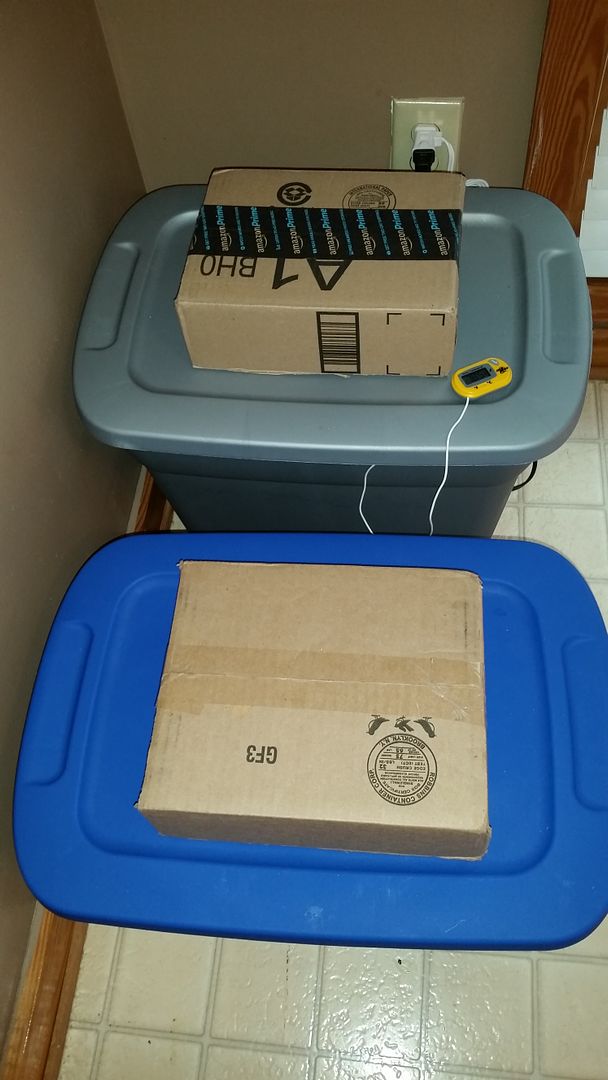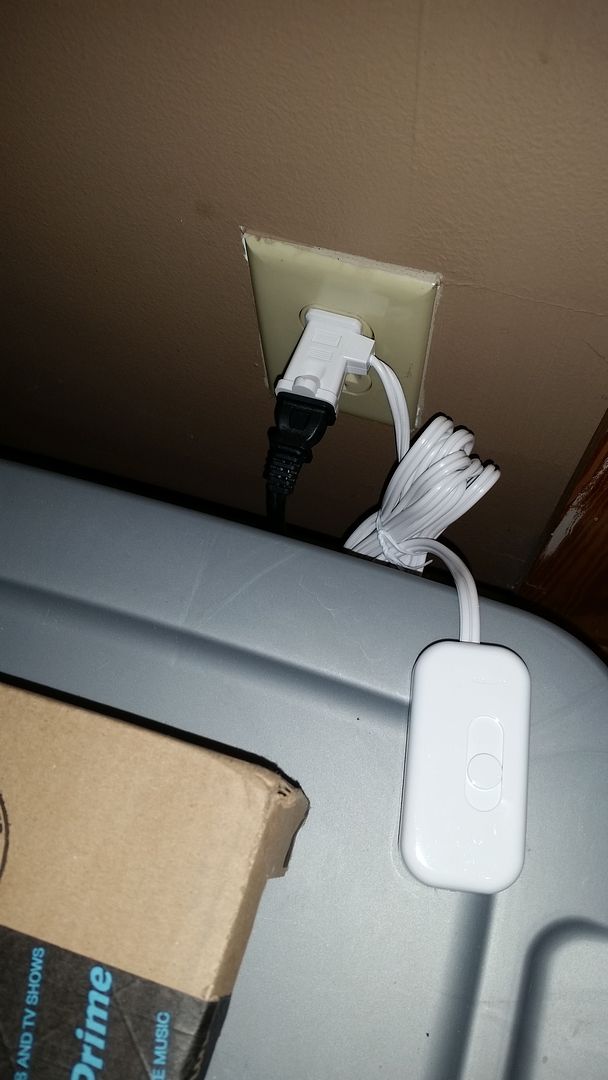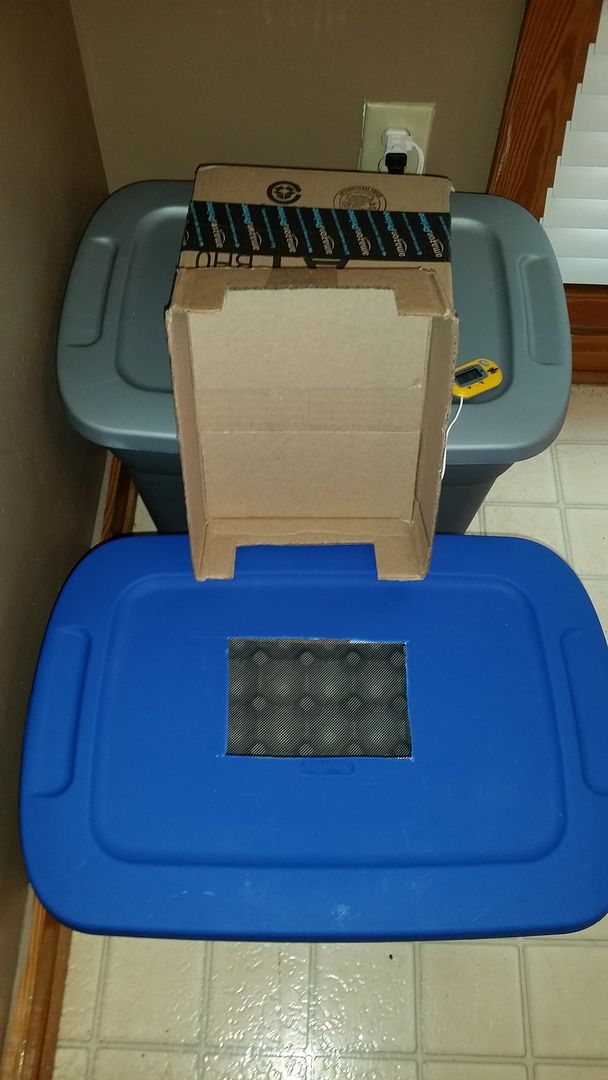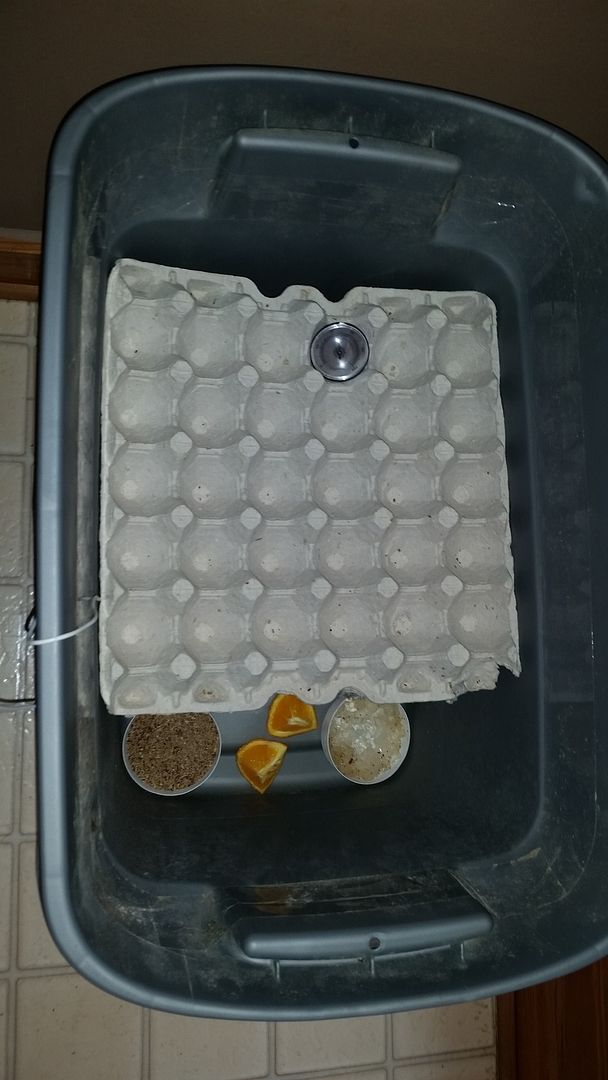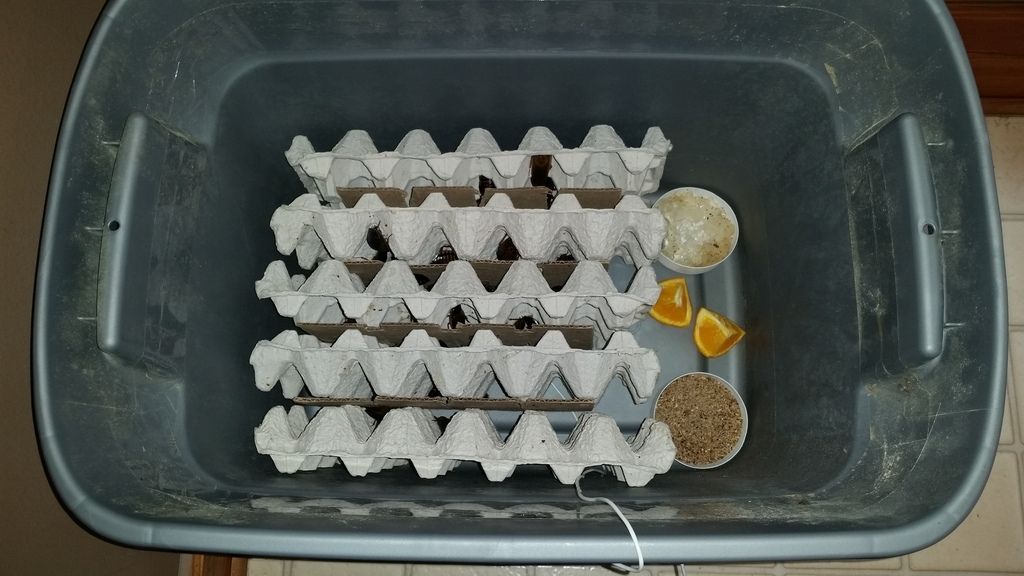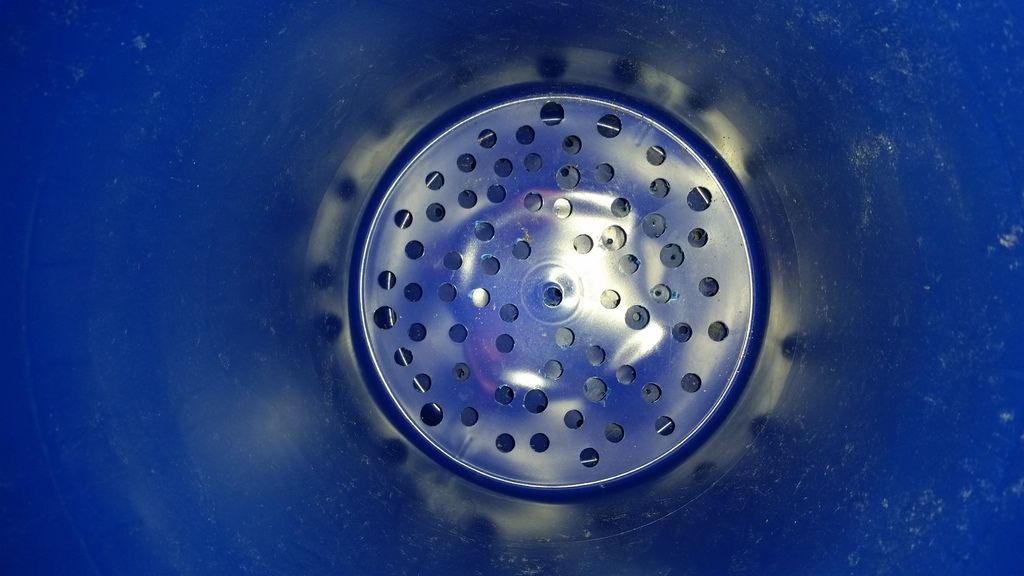WhitenerJ
Arachnosquire
- Joined
- May 6, 2016
- Messages
- 64
So I have a colony of Dubia roaches with 16 females, 6 males, and other smaller nymphs. . I've had the colony for almost 3 months and have not seen and babies. I have a heating pad to keep the temp around 90 and have been feeding oranges. Does it normally take this long to produce babies?

